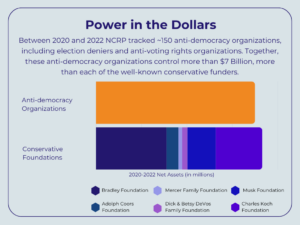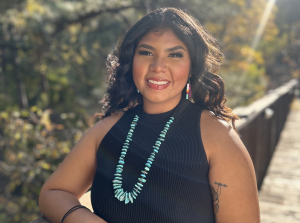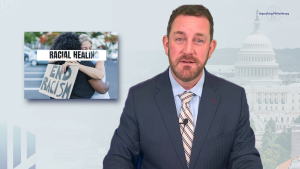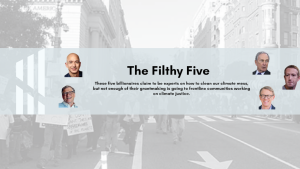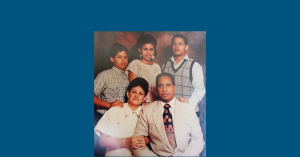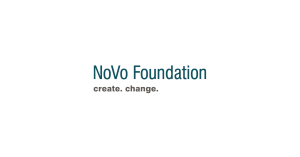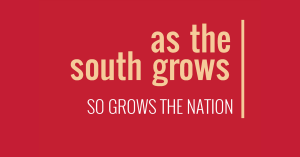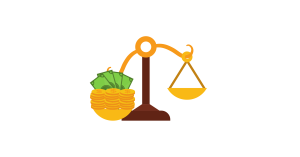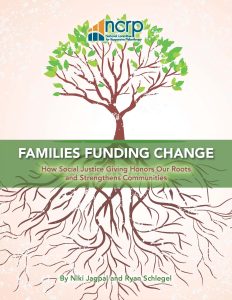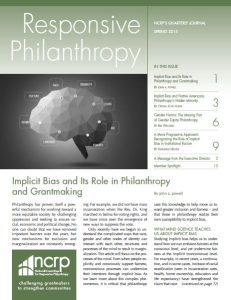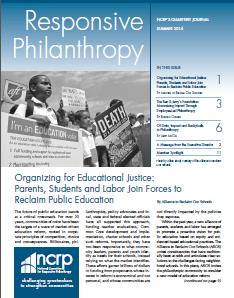You’ve heard that “everything is bigger in Texas,” but let me put this into context: Texas has over 1000 school districts, 202 charter operators and 8,571 campuses (including 588 charters). There are 5.15 million students, 61 percent of whom are low-income, 52 percent of whom are Hispanic. And these numbers are only growing. We add an average of 80,000 students per year at a cost of approximately $1 billion dollars per year. Our 5.15 million kids make up roughly 10 percent of all public school students in America. That means right now, one in ten public school students in America is sitting in a Texas classroom.
Recently I was honored with the opportunity to be a panelist at the National Committee for Responsive Philanthropy’s recent Philamplify debate on whether market-based approaches are compatible with community-led solutions for educational equity. I drew from my experience as founder and manager of the Texas Education Grantmakers Advocacy Consortium (TEGAC), which works to protect and improve public education through policy and advocacy. My goal was to describe how our work might somehow be a bridge between the debaters’ perspectives. In Texas, we have no choice but to focus on far-reaching, equitable, systems-wide improvement. Texas education funders know that if we mess up, the whole country suffers, so the stakes are high. This presents us with a huge challenge but also an incredible opportunity if we get it right.
What is TEGAC?
The Consortium was created in 2011 in response to a $5.4 billion cut to the state’s public education budget. $1.4 billion of this was from the state agency’s “discretionary grants,” which meant a direct cut to the funds that had allowed for decades of public/private partnerships between the state and Texas philanthropy. Since then, 33 private, community and corporate foundations from across the state have joined the Consortium to work together to improve educational outcomes in Texas.
Our members represent the diversity of opinions expressed by the Philamplify Debate participants. We don’t get to pick and choose our perspective because our membership ranges from liberal Austin tech entrepreneurs, to Dallas and Houston oil gazillionaires, to rural old money ranchers who don’t want their home towns to get blown off the map by depopulation and economic stagnation. Our diversity is our greatest strength because it demands consensus.
What does TEGAC do?
Texas grantmakers have diverse priorities, but we all agree on one thing: We’re tired of putting bandages on seemingly intractable problems. Foundations know they should be involved in statewide policy issues with the potential for systems change, but often don’t know how to engage in a manner that’s comfortable for trustees and in partnership with other philanthropists.
The Consortium puts funders in the driver’s seat for education advocacy. Our members determine shared goals that fit within our equity lens and then actively engage in advocacy.
This process turns traditional advocacy grantmaking on its head – and it’s working. We’re having a different conversation at the Capitol and among our grantmaker peers about the role of foundations in improving Texas education.
The small, nimble, creative and fearless foundations are the ones leading this effort in Texas, not the big guys. This was out of necessity; early on, smaller foundations achieved the power and safety in numbers that large foundations don’t traditionally encounter. Together, we:
- Encourage philanthropy to use statewide public policy and advocacy as the grantmaking strategy with the most potential for system-wide improvement.
- Focus exclusively on statewide policies that impact equity, which we define as policies that affect the largest number of students, especially those with the greatest needs. This includes fighting budget cuts, expanding and improving access to pre-kindergarten and implementing policies to ensure low-income, first generation students are able to graduate, go to college and join the workforce.
- Encourage policymakers to consider scaling best practices from the education reform world so that all children can benefit.
- Ask districts and the state agencies what information and capacity they need to do their jobs well.
Texas foundations were brought together in the crisis of a budget cut, but they have chosen to stay together because of their shared interest in thinking bigger than individual programs and using strategies with the power to create true equity and systems-level change. The trustees of the foundations involved in our consortium are becoming known around the Texas Capitol as advocates of policies that improve the lives of 5 million Texas kids. Philanthropy can make things happen without even writing a check, and this is what foundations have chosen to embrace in Texas. It is big and bold, and very Texan.
Jennifer Esterline is the founder and manager of the Texas Education Grantmakers Advocacy Consortium.














